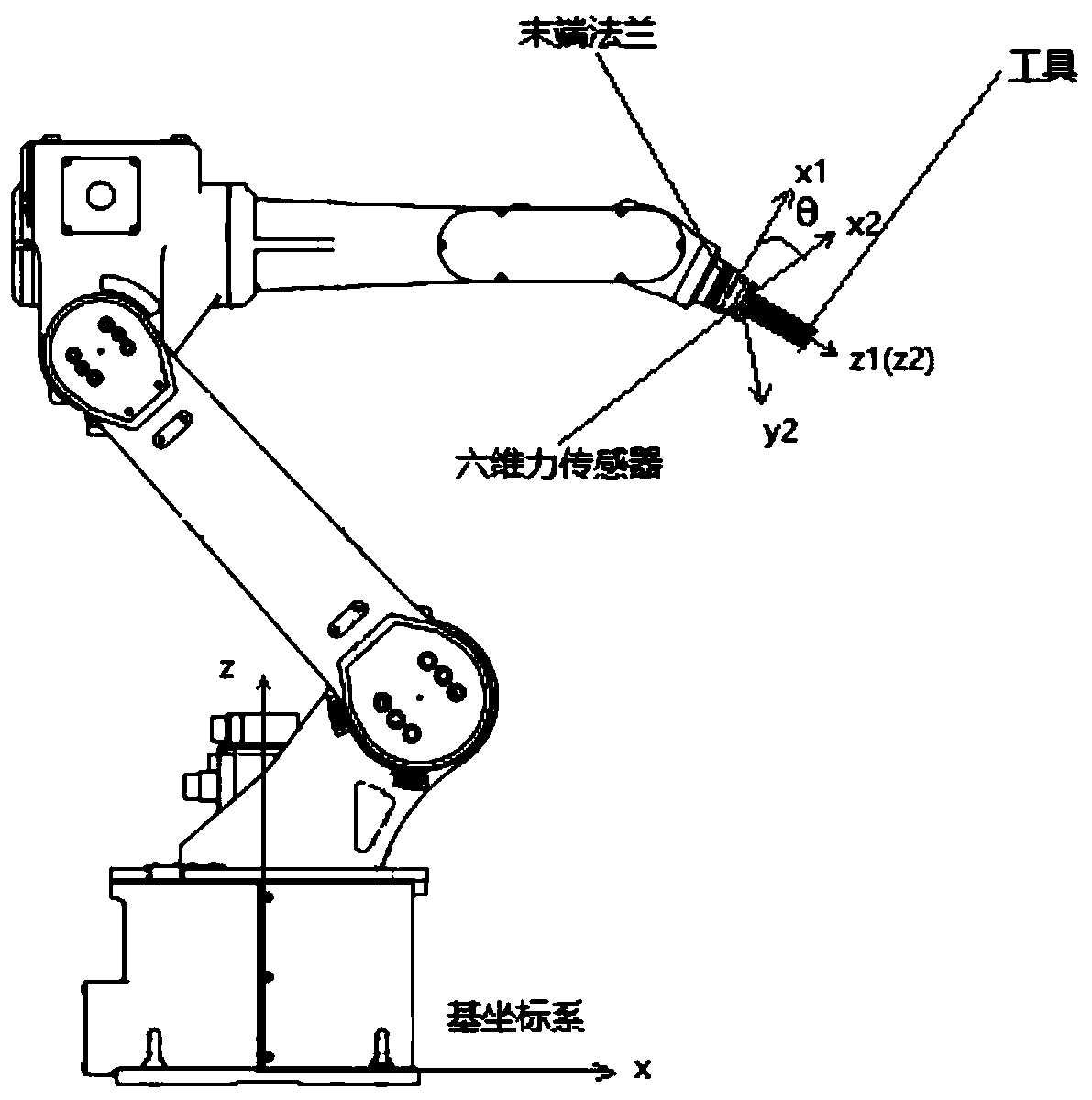Method of calibrating six-dimensional force sensor at tail end of industrial robot
A six-dimensional force sensor and industrial robot technology, which is applied in the direction of manipulators, manufacturing tools, program control manipulators, etc., can solve the problems of inability to install the sensor, cannot guarantee the Z-axis installation angle of the sensor coordinate system, and calibration, so as to shorten the calibration time , improve precision, improve the effect of accuracy
- Summary
- Abstract
- Description
- Claims
- Application Information
AI Technical Summary
Problems solved by technology
Method used
Image
Examples
Embodiment Construction
[0033] In order to make the object, technical solution and advantages of the present invention clearer, the present invention will be further described in detail below in conjunction with the accompanying drawings and embodiments. It should be understood that the specific embodiments described here are only used to explain the present invention, not to limit the present invention. In addition, the technical features involved in the various embodiments of the present invention described below can be combined with each other as long as they do not constitute a conflict with each other.
[0034] figure 1 It is a flow chart of the six-dimensional force sensor calibration method at the end of the robot constructed according to the preferred embodiment of the present invention. As shown in the figure, the following steps specifically illustrate the derivation process of the method of the present invention:
[0035] Step 1: Control the robot to change different postures, record the...
PUM
 Login to View More
Login to View More Abstract
Description
Claims
Application Information
 Login to View More
Login to View More - R&D
- Intellectual Property
- Life Sciences
- Materials
- Tech Scout
- Unparalleled Data Quality
- Higher Quality Content
- 60% Fewer Hallucinations
Browse by: Latest US Patents, China's latest patents, Technical Efficacy Thesaurus, Application Domain, Technology Topic, Popular Technical Reports.
© 2025 PatSnap. All rights reserved.Legal|Privacy policy|Modern Slavery Act Transparency Statement|Sitemap|About US| Contact US: help@patsnap.com



